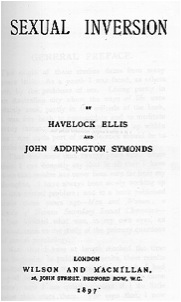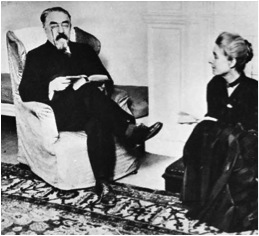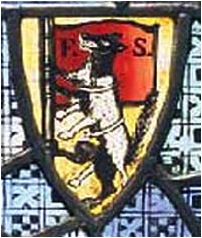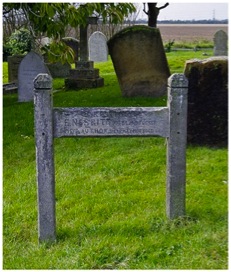Pete Goddard and Atul Hatwal turn their attention to the Fabians as they look at the organisations that set up the Labour representation committee (LRC) in 1900
The Fabians germinated from very modest seeds.
In October 1883 Edith Nesbit, her husband Hubert Bland and their Quaker chum Edward Reese decided to set up a debating society. That was it. They were the first Fabians.
Nesbit was something of a J K Rowling of her day, mixing easily in political and literary worlds. Not content with founding the Fabians, Britain’s first political think tank, she also wrote a series of best-selling books.
Most pertinently for the modern generation, she wrote the Railway Children and thereby can claim the credit for introducing a generation of young men to Jenny Agutter. Thank you, Edith Nesbit.
The new society took its name from the Roman general Quintus Fabius Maximus. He advocated weakening the opposition by harassment operations rather than becoming involved in pitched battles, which seems like good advice when there are just three of you.
The Fabians’ aim was “To try to improve the social system or rather to spread its news as to the possible improvements of the social system.“
Snappy stuff.
To achieve this, the stated activities the Fabians carried out in order to improve the social system were, er, “someone reads a paper and we talk about it.” True, it was a paper on a social or political subject, rather than a copy of the Daily Star, but there was still little there to get the Tory establishment quaking in their riding boots fearful of the Bolshevik horde.
E. Nesbit’s crew were, if you hadn’t guessed already, rather more genteel than some other comrades on the left such as the social democratic federation. Their most revolutionary aspect was the interesting personal lives of some of their early members.
For example, there was Havelock Ellis, whose book presaging the NHS, “The Nationalism of Health” was widely ignored in favour of the racier “Sexual inversion”. This was a study of homosexuality that scandalised many and prompted feminist and abortionist Marie Stopes to gasp that reading it was “like breathing a bag of soot. It made me feel choked and dirty for three months,” an experience that will be familiar to anyone who has read a Jeffrey Archer.

Havelock Ellis’ scandalous book - the cover wasn’t much, but the fold-out centre pages more than made up for it
Then there was Beatrice Potter. That’s Beatrice Potter not Beatrix otherwise British children’s literature might have looked very different. Tales of Squirrel Nutkin seizing control of the means of production might have resulted in a rather different generation at the turn of the century.
Beatrice Potter was in her early 20s when she joined the Fabians, but was already a familiar face on the British political scene. In the early 1880s she had an affair with radical Liberal cabinet minister and political superstar Joseph Chamberlain.
After this had ended badly, Potter helped out her cousin Charles Booth on a spot of research he was conducting. This became the ground breaking work Life and labour of the people in London. It was a major influence on British social policy, quantifying poverty in London for the first time and was a founding text for the new subject of sociology. And it looked rather better on Beatrice’s political CV than “shagged a minister”.
Potter was a confident and acerbic character. On meeting fellow Fabian Sidney Webb, she declared that his “tiny tadpole body, unhealthy skin, cockney pronunciation and poverty are all against him.”
Dear reader, she married him.
Yes, Beatrice became Mrs Webb, working with her husband on several books, forging the partnership at the heart of the Fabians and spending the next 51 years insisting that “the tadpole body thing was only a joke. Honestly.”

In the days before television, watching your husband read was like Strictly for Sidney and Beatrice Webb
Such colourful characters got together and enjoyed talks at the Fabian society including “how can we nationalise accumulated wealth”, “the economics of a postivist community” and “Ugg boots: hot or not”.
As well as debating, the Fabians also produced pamphlets such as the “government organisation of unemployed Labour”, in which they established their belief in the funding of rural land armies, their reluctance to support large-scale public employment and their total inability to think up catchy pamphlet titles.
The Fabians also conducted investigations into unemployment and other social ills to promote their arguments, in line with their self-perceived role as a “fact-finding and fact-dispensing body”
Similarly, when it came to driving change in society, the Fabians adopted the tactic of trying to convince people by “rational factual socialist argument”.
You can see how they might have struggled.

The Fabians’ original logo - a wolf in sheep’s clothing. Then someone said “um, that’s actually supposed to be a bad thing”. It is now a tortoise.
But along with their roster of leading members of the intellectual left, volumes of pamphlets with unspeakably dreary titles and full command of some of the biggest words in the English language, the Fabians had a secret weapon in establishing their influence on the left: money.
By 1886, the Fabians had 67 members and an income of £35 19s. In today’s money this is just over £3,000. A tidy little sum for a debating club, but no more.
Then in 1890, Henry Hutchinson, a wealthy solicitor from Derby, gave the Fabians £200 per year – over £17,000 today. Again, a useful sum and certainly enough to set up a small professional operation. But still not transformative.
Then in 1894, Hutchinson died. Bad news for Mr Hutchinson; good news for the Fabians. He left £10,000 in his will for “propaganda and socialism”. This was an amount of money that could go a really long way.
Rather than fritter away this money on social programmes to alleviate the misery of poverty or build a grass roots political organisation, his Fabian executors decided that the best way to fulfil his dying wish was to set up a new university in London.
The London school of economics (LSE) was founded in 1895. And in the words of Sidney Webb had the explicit intent to “teach political economy on more modern and more socialist lines than those on which it had been taught hitherto, and to serve at the same time as a school of higher commercial education”.
This was the game changer.
Establishing a major educational institution that would teach the rational, factual reality of politics and economics (at least in the Fabians’ view) and churn out generation after generation of left-leaning leaders was a landmark in the development of the British Labour movement.
The LSE and the influence it bought cemented the role of the Fabians in the left’s firmament. As a result, they were not only present but one of the big players in 1900 at the meeting in Farringdon that set up the Labour representation committee.
The moral of the Fabians tale is that while there is a lot to be said for rational, factual argument, it’s remarkable how much further your rational, factual argument will go when it’s riding on the back of bags and bags of cash.
Next up, the real engine behind Labour’s foundation: the unions.
Pete Goddard and Atul Hatwal are not historians
Tags: Atul Hatwal, Beatrice Potter, Edith Nesbit, Fabians, Pete Goddard










Another great game changer; trade unionist and unsung statesman was my great, great uncle.
In fact in 1886 he helped form the Piercers’ Union
He too joined the Fabians in 1892. In 1929 he was appointed Home Secretary!
I recommend reading (if you can find a copy)
J. R. Clynes, Memoirs (1869-1924 and 1924-1937)